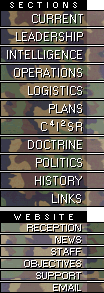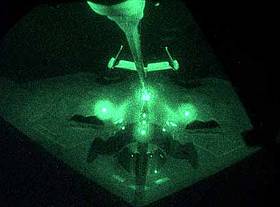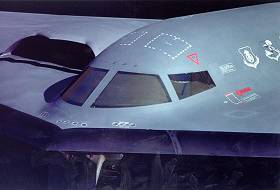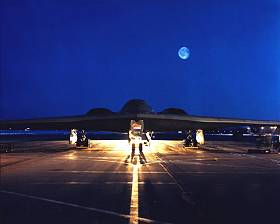





Bolster the B-2 Fleet Now: Future Challenges Demand Penetrating Bomber
April 15, 2001

et another Clinton administration and Air Force bomber study has concluded that upgrading the service's existing fleet of B-52, B-1, and B-2 bombers is a better near-term choice than buying additional B-2s or beginning development of a new bomber.
The "Next Generation Bomber" study is correct that upgrades to the bomber force — improving stealth maintenance, configuring the B-2 to deliver hundreds of small, smart bombs and converting its 286 processor to a Pentium III world — are desirable in any event. The study is also correct in endorsing recent statements by Air Force Chief of Staff General Michael Ryan that until a new bomber offers a quantum leap over the B-2, it makes little sense to spend the $40 billion or so that would be required for its development.
It is deeply flawed, however, in its recommendation to limit the size of the B-2 fleet to 16 operational aircraft. A critical review of bomber force plans, and defense strategy more broadly, should be an urgent priority for the next administration.
Current Air Force plans call for maintaining a fleet of 130 operational bombers through 2037, at which time the B-52s will be 80 years old, the B-1s close to 60, and B-2s, 45. Development of a new bomber isn't scheduled to begin until 2019, with initial production deferred until 2034. Over the next two and a half decades, the Air Force plans to procure, at a cost approaching $200 billion, more than two thousand new fighters (339 F-22s and 1,763 Joint Strike Fighters). Bomber investment during the same period will likely amount to no more than a twentieth of this amount. Between 1998 and 2003 alone, the ratio of fighter investment to bomber investment will have increased from 3.5:1 to 35:1.
This heavy reliance on fighters and aging, non-stealthy bombers ignores emerging strategic realities. Ballistic and cruise missiles are placing the theater bases from which the Air Force's short-range fighter aircraft must operate at increasing risk. Additionally, air defenses pose an increasing threat to non-stealthy aircraft. Even against the antiquated air defenses of Yugoslavia, only stealthy aircraft – the B-2 and F-117 – were allowed to fly over Belgrade for the first 58 days of last year's war in Kosovo.
Every secretary of defense from Melvin Laird to Dick Cheney has endorsed the purchase of additional B-2s. The current force of 16 operational (21 total) B-2s, as retired General Chuck Horner, commander of allied air operations during the Persian Gulf War, has noted, is far too small to underwrite a large-scale air campaign. As he retired from the service, Horner, a fighter pilot, observed:

«The Gulf War gave me a glimpse of the future of warfare. I saw adversaries who attacked without warning. I saw adversaries armed with weapons of mass destruction and ballistic missiles. I saw an American public that expected our wars to be swiftly won and relatively casualty free.
In 1996 I see the same things but my confidence that we can overcome these things has faded. In 1991, I returned from the Gulf convinced that tomorrow's air commanders required – and would indeed have – a fleet of sixty or more stealth bombers. Inexplicably, the B-2 fleet was slashed from 75 to 20, undermining our ability to employ a newly relevant strategy.»
The B-2 is, without doubt, a very expensive aircraft. Its strategic cost-effectiveness depends on its ability to penetrate any projected air defense and to deliver long-range precision strikes—particularly against critical mobile targets such as missile launchers—more efficiently than can, for example, an expendable cruise missile or reusable unmanned combat air vehicle. These potential alternatives to a penetrating bomber, however, face considerable technological and operational risk, and are not likely to be fielded in meaningful quantities for the better part of two decades.
Similarly, the bomber technologies that might enable a "quantum leap" beyond the B-2 – advanced propulsion, hypersonics, unmanned capabilities and significantly reduced signature – are not likely to be sufficiently mature for at least another decade. Hence, such a bomber is unlikely to enter the force until 2025 or thereabouts, even if the Air Force substantially accelerates its current plans.

To be sure, penetrating bombers are but one element of an effective long-range precision strike system. Equally important is the ability to find critical mobile targets, a capability that U.S. forces lack at present, and whose realization was not helped by Congress's recent cancellation of the Discoverer II, space based, moving target indicator radar project.
But in the event of a Chinese attack on Taiwan between now and 2020, the B-2 will likely be the only weapon system in the U.S. arsenal that is capable of targeting mobile missiles deep in China's interior. If the Japanese were to get squeamish about allowing U.S. forces use of their bases in the defense of Taiwan, the bomber, which flew 30-plus hour missions from its base in Missouri during last year's war, could prove even more vital. The need for additional B-2s, moreover, far transcends a potential Chinese threat to Taiwan. An Iraq or Iran armed with nuclear-tipped ballistic missiles could also stymie U.S. forces' ability to counter another oil grab.
Twenty additional B-2s, which would double the size of the operational fleet, would cost in the neighborhood of $20 billion, a large sum, but paltry compared to the $200 billion the Air Force plans to spend on new fighters. While Clinton administration-sponsored studies have consistently opposed more B-2s, independent studies have come to different conclusions. A 1997 review chaired by former Bush National Security Adviser Brent Scowcroft, for example, recommended 18 additional B-2s. A future bomber force study conducted by Commission on Roles and Missions staff in 1995 argued that the total force of 40 to 60 B-2s was needed to meet the demands of the current and emerging security environment, and suggested several offsetting force structure cuts to pay for it.
Opposition to additional B-2s has been a hot button political issue throughout the 1990s, not only for many on the left, who tend to view the bomber as a wasteful, Cold War relic, but also for prominent conservatives such as John McCain and John Kasich. Consider this, however: if you were a Chinese military planner, what would you fear more in 2015, a fleet of fighters whose forward bases you could hold at risk and aging bombers, nearly 90 percent of which could not penetrate your nation's air space, or double the number of B-2s? Finding the funds and political will to pay for 20 additional B-2s makes both strategic and budgetary sense.
Text source: Michael Vickers, Center for Strategic and Budgetary Assessments, October 23, 2000
© 2001 CheckPoint |














